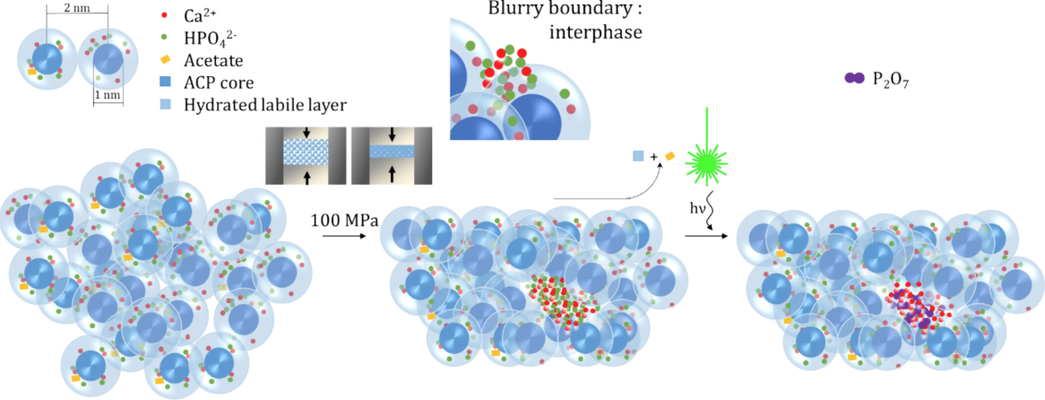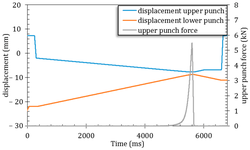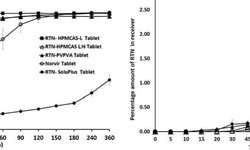Scientific papers
Amorphous calcium phosphates (ACPs) are a group of bioactive compounds with particular importance in bone regeneration. However, their inherent metastability prevents them from being processed into 3D shapes through conventional sintering methods, necessitating the use of cold sintering techniques. Additionally, the detailed study of their microstructure and local compositional variations remains incomplete. To address this, spectroscopy techniques are highly suitable for examining local chemical environments on a microscale. A key question regarding ACPs involves the distribution of (hydrogenated) phosphate species, as these can lead to different evolutionary trends. In this study, we deliberately utilized the interaction between a laser beam and the material through Raman mapping to initiate an in situ transformation from HPO42− to P2O74−. Multivariate analysis enabled us to identify P2O74− clusters forming from HPO42−-rich initial domains. Furthermore, a blue shift in the ν1PO43− band was observed near these clusters, indicating a localized change in the chemical composition of the ACP. These findings, supported by differential thermal analysis, highlight the effectiveness of using laser-induced local heating to investigate the spatial evolution caused, in this case, by an ultrafast compaction process. A comparison of results from two different laser/power strategies emphasized the need to adjust Raman analytical conditions according to the behavior of this metastable material for accurate analysis.

Comments
No comments posted yet.
Add a comment















